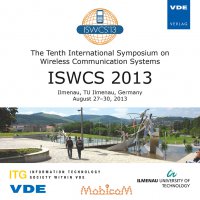Efficient GPU implementation of Lattice-Reduction-Aided Multiuser Precoding
Conference: ISWCS 2013 - The Tenth International Symposium on Wireless Communication Systems
08/27/2013 - 08/30/2013 at Ilmenau, Deutschland
Proceedings: ISWCS 2013
Pages: 5Language: englishTyp: PDF
Personal VDE Members are entitled to a 10% discount on this title
Authors:
Józsa, Csaba M. (Faculty of Information Technology, Pázmány Péter Catholic University, Hungary)
Domene, Fernando; Pinero, Gema; González, Alberto (Inst. Telecommunications and Multimedia Applications (iTEAM), Universitat Politècnica de València, Spain)
Vidal, Antonio M. (Dept. of Information Systems and Computation, Universitat Politècnica de València, Spain)
Abstract:
Different multiple-input multiple-output (MIMO) techniques have been proposed during the last decade to improve the spectral efficiency of wireless communications systems. When MIMO is applied to multiuser communication systems, spatial diversity can be achieved even if the mobile stations (MS) are not equipped with multiple antennas. However, since the MSs do not know other users’ channels, the entire processing task must be done at the base station (BS), especially symbol precoding to cancel multiuser interference. Assuming channel information is sent back by all the MSs to the BS, a promising technique that can be applied for both linear and non-linear precoding techniques is the lattice reduction (LR) of the channel matrix. However, the computational cost of LR algorithms is very high, depending on the matrix dimensions, and can become critical for very large MIMO arrays. In this paper, lattice reduction of MIMO channel matrix has been efficiently implemented on a general-purpose graphics processing unit (GP-GPU) for large channel matrices. As an example of its benefit, the bit error rate (BER) performance of some LR-aided precoding techniques has been evaluated through numerical simulations, obtaining a significant BER decrease compared to non LR-aided precoding.


